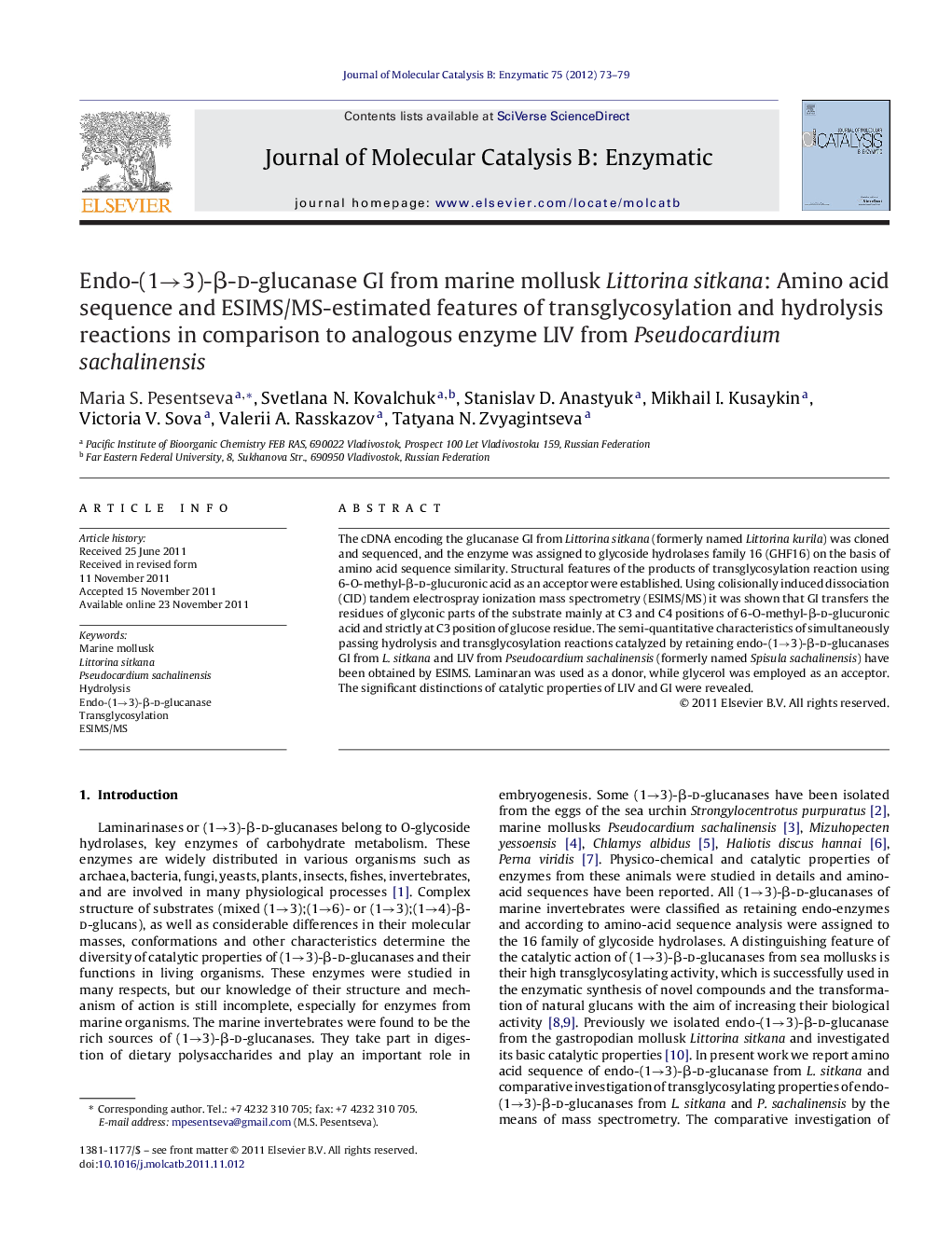| Article ID | Journal | Published Year | Pages | File Type |
|---|---|---|---|---|
| 70117 | Journal of Molecular Catalysis B: Enzymatic | 2012 | 7 Pages |
The cDNA encoding the glucanase GI from Littorina sitkana (formerly named Littorina kurila) was cloned and sequenced, and the enzyme was assigned to glycoside hydrolases family 16 (GHF16) on the basis of amino acid sequence similarity. Structural features of the products of transglycosylation reaction using 6-O-methyl-β-d-glucuronic acid as an acceptor were established. Using colisionally induced dissociation (CID) tandem electrospray ionization mass spectrometry (ESIMS/MS) it was shown that GI transfers the residues of glyconic parts of the substrate mainly at C3 and C4 positions of 6-O-methyl-β-d-glucuronic acid and strictly at C3 position of glucose residue. The semi-quantitative characteristics of simultaneously passing hydrolysis and transglycosylation reactions catalyzed by retaining endo-(1→3)-β-d-glucanases GI from L. sitkana and LIV from Pseudocardium sachalinensis (formerly named Spisula sachalinensis) have been obtained by ESIMS. Laminaran was used as a donor, while glycerol was employed as an acceptor. The significant distinctions of catalytic properties of LIV and GI were revealed.
Graphical abstractFigure optionsDownload full-size imageDownload as PowerPoint slideHighlights► The cDNA encoding of the glucanase GI from L. sitkana was cloned and sequenced. ► We used ESIMS and ESIMS/MS to study the hydrolysis and transglycosylation products. ► The glucanase from P. sachalinensis was used to compare the features of catalysis. ► The significant distinctions of catalytic properties of glucanases were revealed.
